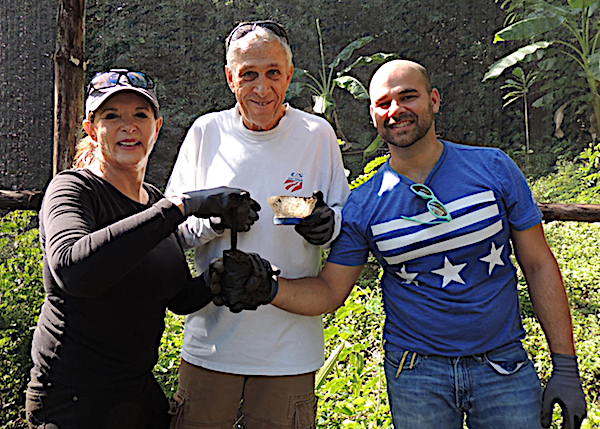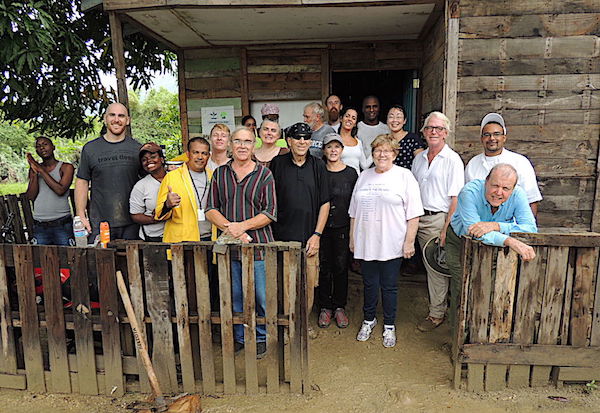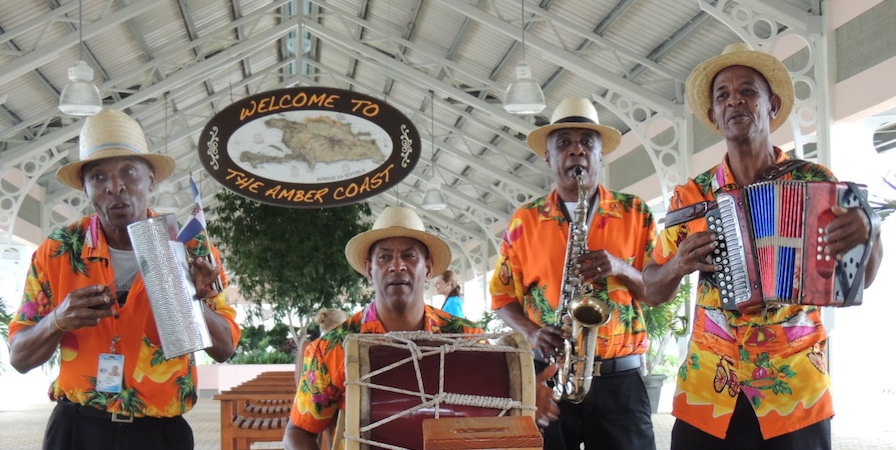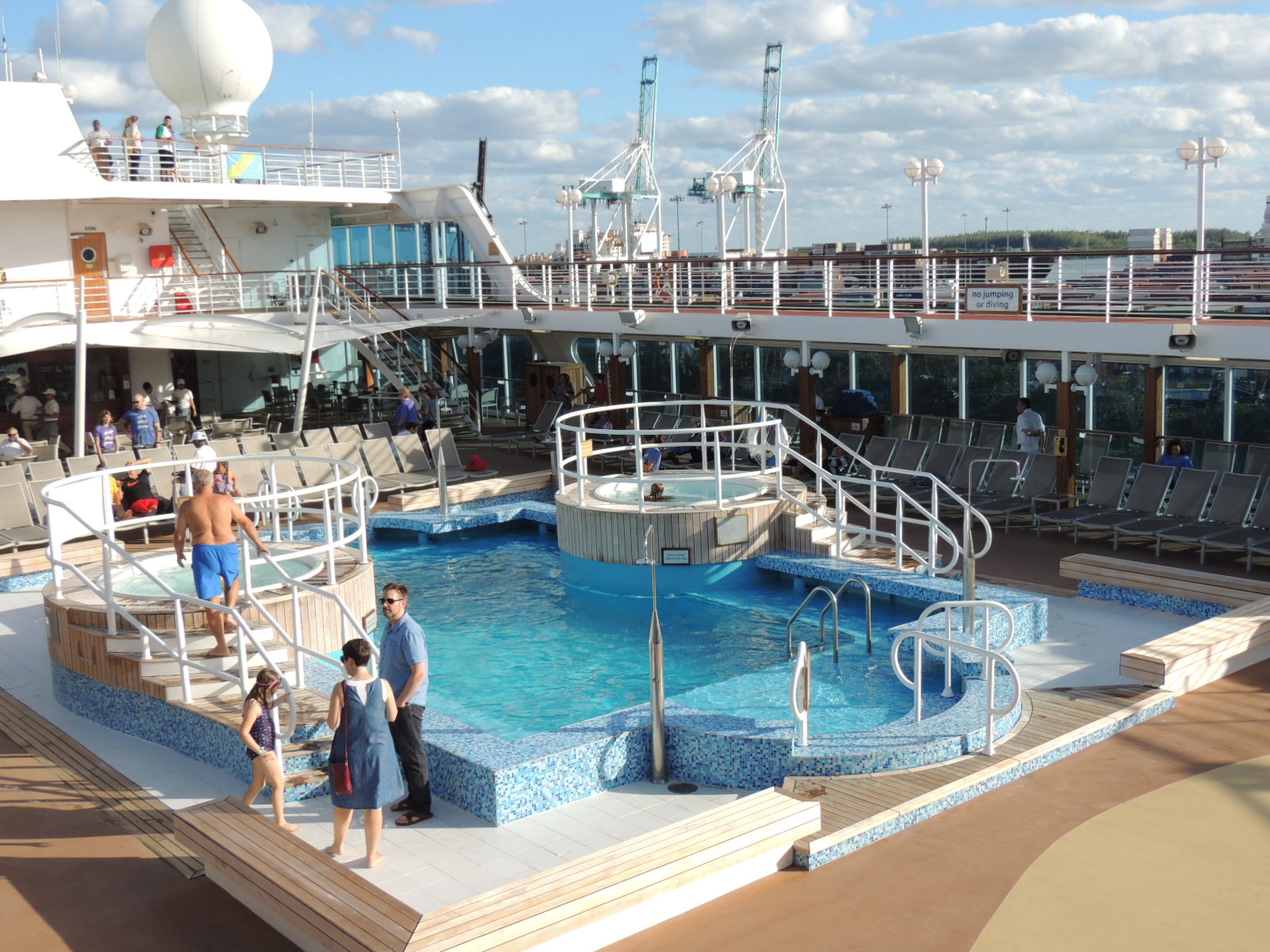
This is our final day on the Dominican Republic and our final Impact Activity: Reforestation. Nineteen of us gathered on the bus. Many of us were sore from previous day’s activities, but here we were, ready to tackle another project. Our Impact Leaders were Joanna and Yvonne. Our journey to the community of Los Bordos would take about 30 minutes. This time we were going uphill on narrow streets. Our driver, Willie, was skilled in taking our bus through town and up to the reforestation area. Along the way were houses built against a winding road. When we drove through the gate, it was like being in a time warp. The houses disappeared and a forest canopy covered the top of a hill. We had arrived.
After we were welcomed, it was time to go to work. Before we exited the bus, Joanne gave everyone a small colored ribbon. The color of your ribbon determined your group (4 different groups). Our group was a yellow ribbon. We met with Rolandito who gave us a tour of the area. He showed us the different trees and explained how some of them were used for medicines.

Rolandito showed us a plant called “she-goat” which will cure asthma in small children. It only takes 3 drops on a child’s tongue.
This fruit is the Sour Sho (Guanabana). There was a ripe one on the tree. Rolandito opened it and let us taste it. It has a minty taste. People make a candy from this fruit using brown sugar and cinnamon.
There are many fruit trees, such as the papaya, in this area. Mango and avocado are popular and highly valued. When fruit from the tree become ripe, the locals are allowed to come into the area to pick the fruit. I thought this was a good practice. There are trees that are cultivated besides fruit trees, such as the mahogany tree. There was a small group of them that were 35 years old and still fairly small.
Our group finished the tour and it was time to rotate to a different activity. A mixture of soil, sand, manure, and clay had been piled on the ground near the greenhouse. Our job was to fill small plastic containers with dirt. They had a few holes in them for water to exit.

Team observing the “enriched” dirt pile. Notice their expressions and hands on hips! Not to sure how all this works.
Another team was the “transport” team. After the “compost team” had filled the plastic containers, the transport team took them inside to the greenhouse.
Once the containers are in the green house, another team uses a stick to make a hole. Then, another person drops a seed (ours was a cherry seed) and yet, another person covers the seed and places in a designated area on the ground.
We worked hard and fast. After three hours, we had planted 390 cherry seeds, 210 oranges, 50 tamerins for a total of 650 new plants. They will remain in the greenhouse until they are tall enough to be transplanted to areas owned by the Ministry of the Environment.
We hope our efforts help to conserve water and have a positive environmental impact.
About the Author:
Annie Coburn recently returned from seven months traveling in South America. In 2010, she created Fab Placez. In 2014, she changed the name of her website to FAB Senior Travel. to better define her target audience, mature travelers. She publishes travel articles from other writers, as well as her own, in order to provide diversity of locations to match the breadth of FAB’s subscribers’ interests.
Website: http:// www.fabseniortravel.com










